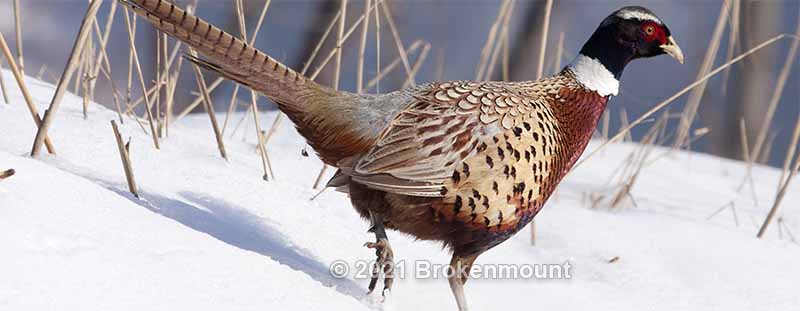Discounted video footage

The Pheasants (Phasianus Colchicus) Video Footage shows common pheasants in various seasonal situations.
First of all the common pheasant is native to Asia and has been widely introduced elsewhere as a game bird.
In particular Common pheasants are gregarious birds and outside the breeding season form loose flocks.
Besides that, they are always timid once they associate humans with danger. Consequently they will quickly retreat for safety after hearing the arrival of hunting parties in the area.
While common pheasants are able short-distance fliers, they prefer to run.
At least since the Roman Empire the bird was extensively introduced in many places.
Finally Pheasant farming is a common practice, and is sometimes done intensively.
Taxonomically, the snow leopard was long classified in the monotypic genus Uncia. Since phylogenetic studies revealed the relationships among Panthera species, it has been considered a member of that genus. Two subspecies were described based on morphological differences, but genetic differences between the two have not been confirmed. It is therefore regarded as a monotypic species. The snow leopard differs from the other Panthera species by a shorter muzzle, an elevated forehead, a vertical chin and a less developed posterior process of the lower jaw. It cannot roar despite its partly ossified hyoid bone, as its 9 mm (0.35 in) short vocal folds provide little resistance to airflow.
Snow leopards become sexually mature at two to three years, and normally live for 15–18 years in the wild. In captivity they can live for up to 25 years. Oestrus typically lasts from five to eight days, and males tend not to seek out another partner after mating, probably because the short mating season does not allow sufficient time. Paired snow leopards mate in the usual felid posture, from 12 to 36 times a day. They are unusual among large cats in that they have a well-defined birth peak. They usually mate in late winter, marked by a noticeable increase in marking and calling. Females have a gestation period of 90–100 days, and the cubs are born between April and June. A litter usually consists of two to three cubs, in exceptional cases also up to seven.
